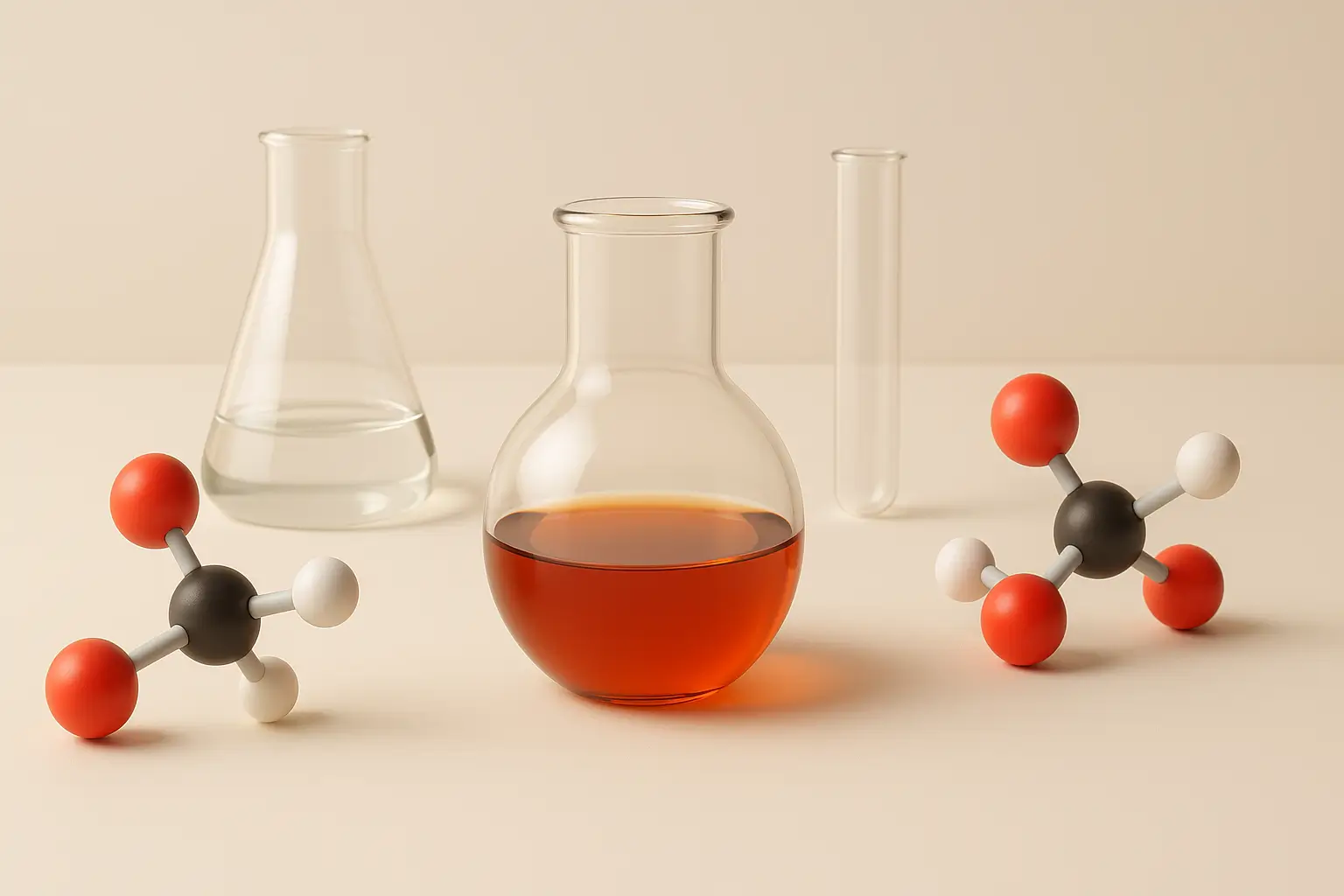- Carboxylic acid Preparation is done by various methods, each one involving specific reactants and conditions.
- Here is an overview of the Carboxylic acid primary preparation methods:
Oxidation of Primary Alcohols and Aldehydes
-
Oxidation of Primary Alcohols:
- Primary alcohols are oxidized to carboxylic acids using strong oxidizing agents like potassium permanganate (KMnO₄) or potassium dichromate (K₂Cr₂O₇) under acidic conditions.
- Reaction: RCH₂OH + 2[O] ⟶ RCOOH
- Example: Ethanol to Acetic Acid
- CH₃CH₂OH + 2[O] (from KMnO₄) ⟶ CH₃COOH
-
Oxidation of Aldehydes:
- Aldehydes are converted to carboxylic acids using oxidizing agents like silver(I) oxide (Ag₂O) or Tollens’ reagent.
- Reaction: RCHO + [O] ⟶ RCOOH
- Example: Acetaldehyde to Acetic Acid
- CH₃CHO + [O] (from Ag₂O) ⟶ CH₃COOH
Oxidation of Alkyl Side Chains of Aromatic Compounds
- Alkylbenzenes with a benzylic hydrogen can be oxidized to aromatic carboxylic acids using oxidizing agents such as KMnO₄ or chromium trioxide (CrO₃) in an acidic medium.
- Reaction: Ar-CH₃ + 2[O] ⟶ Ar-COOH
- Example: Toluene to Benzoic Acid
- C₆H₅CH₃ + 2[O] (from KMnO₄) ⟶ C₆H₅COOH
Hydrolysis of Nitriles
- Nitriles can be hydrolyzed into carboxylic acids under acidic or basic conditions, producing ammonia as a byproduct.
- Reaction: RC≡N + 2H₂O ⟶ RCOOH + NH₃
- Example: Acetonitrile to Acetic Acid
- CH₃C≡N + 2H₂O ⟶ CH₃COOH + NH₃
Carboxylation of Grignard Reagents
- Grignard reagents react with carbon dioxide to form carboxylate salts, which are then acidified to yield carboxylic acids.
- Reaction: RMgX + CO₂ ⟶ RCOOMgX followed by RCOOMgX + H₃O⁺ ⟶ RCOOH + MgX(OH)
- Example: Methylmagnesium bromide to Acetic Acid
- CH₃MgBr + CO₂ ⟶ CH₃COOMgBr
- Then, CH₃COOMgBr + H₃O⁺ ⟶ CH₃COOH + MgBr(OH)
Click Here to Watch the Best Pharma Videos

